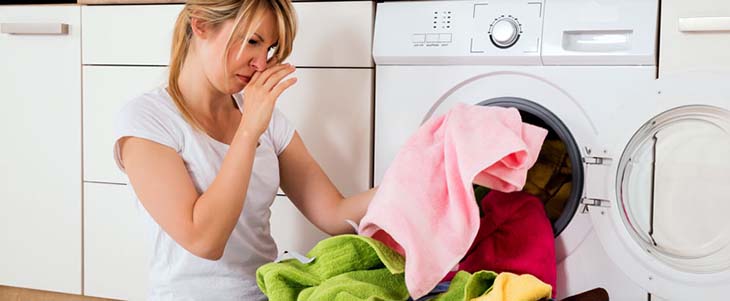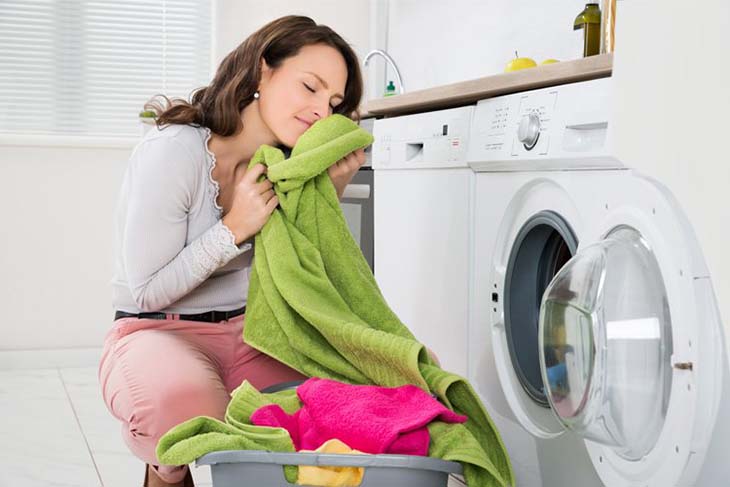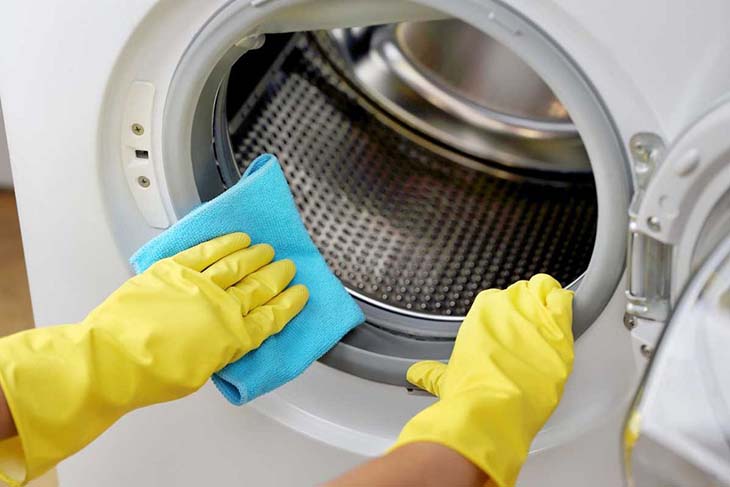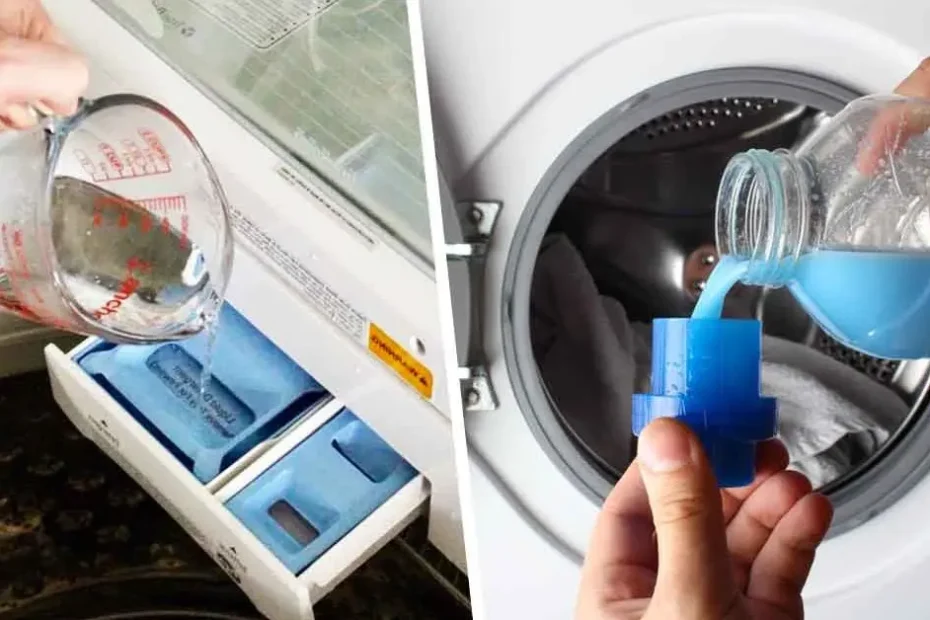Musty odors, humidity or even mold… Over time, the washing machine drum can accumulate a mixture of unpleasant odors. To remove bad odors from the drum, it is necessary to clean the washing machine thoroughly. Discover a formidable tip to make your washing machine smell like the first day.
The washing machine is constantly exposed to humidity and can harbor stubborn odors over the long term. To combat these bad odors, you do not need to use chemicals to deodorize the drum. Some eco-friendly tips help clean and scent the washer so it smells as good as the first day.
Why does the washing machine harbor bad odors?
Often, bad odors are linked to improper cleaning technique or poor washing machine maintenance.


Clothes that smell bad – Source: spm
Before revealing a tip that will allow you to deodorize your washing machine, here is a list of reasons why your household appliance may smell bad:
- Mold that has formed at the joints
- A plug stuck at the filter
- Poor evacuation of detergent residue which may be blocked in the washing machine or drum
- Wash cycles at low temperatures which end up creating limescale and too much detergent
- Systematic closing of the porthole responsible for excess humidity
- Dirt in the laundry drawer
All of these reasons are likely to explain a musty smell that persists in the washing machine.
A tip against stubborn odors
To allow the washing machine to function optimally and preserve a good smell of freshness and cleanliness, there is a foolproof tip to put in place.


Clean and fragrant laundry – Source: spm
Here are the steps to follow:
- After putting on protective gloves, dip two rags in bleach
- Once the cloths are damp, place them on the rubber seals of your washing machine drum overnight
- The next day, remove the rags and put white vinegar in the laundry drawer instead of fabric softener
- Run a long wash cycle at high temperature, empty, i.e. without putting any laundry in the drum
This very simple tip will allow you to absorb bad odors and find a washing machine as clean as new.
6 tips for maintaining your washing machine and avoiding bad odors


The Cleaning the washing machine – Source: spm
To keep the washing machine in good condition and prevent damp odors, it must be maintained regularly.
- Clean the washing machine to remove bad odors
To wash your washing machine, you must clean the drum , the seals, the filters and the detergent drawer and remove all the residue that remains stuck and which is likely to cause bad odors.
- Pay attention to the dosage of detergent and softener to avoid bad odors
Too much detergent or fabric softener can clog the washing machine and cause stubborn odors. Be sure to measure the amount you put in your detergent drawer to maintain your washing machine.
- Alternate hot wash cycles with cold wash cycles to combat bad odors
If you only wash cold, your washing machine risks accumulating bad odors. In fact, washing at 30°C does not destroy the micro-organisms which can cause nauseating odors. From time to time, run a high temperature wash cycle to combat bad odors.
- Leave the door open to get rid of the humidity that causes bad odors
If you close the door after removing your laundry from the machine, excess moisture can cause an unpleasant odor. Be sure to leave it open for 2 or 3 hours after each machine.
- Empty the washing machine as quickly as possible to avoid bad odors
To avoid a damp smell, empty your machine as soon as the wash cycle ends.
- Use a water softener to avoid limescale and bad odors
You can use a water softener to avoid washing with hard water that contains a lot of limescale.
Now you know how to maintain your washing machine and extend its lifespan. Don’t hesitate to discover our tips for making your laundry dried indoors smell good .
